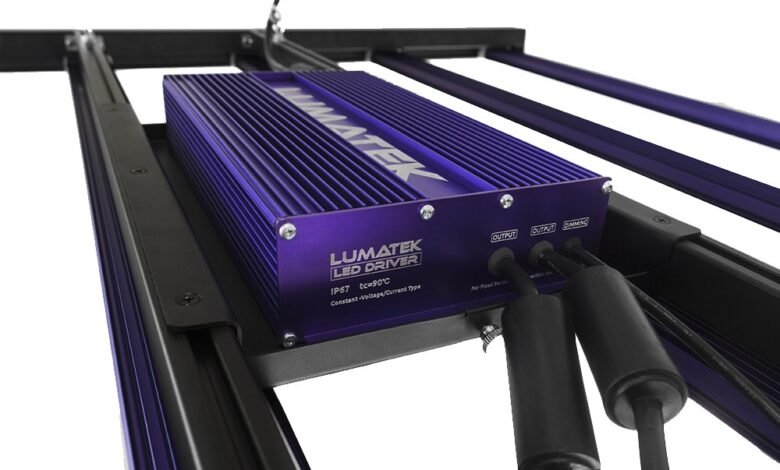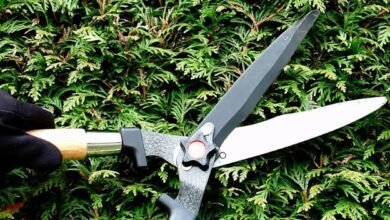Maximizing Indoor Plant Growth with the Right Lighting Solutions

Grow Lights Kits have become an essential tool for indoor gardening, allowing plant enthusiasts to grow a wide variety of plants regardless of outdoor conditions. These kits offer an efficient solution for providing plants with the necessary light spectrum they need for photosynthesis, growth, and flowering. With advancements in technology, Grow Lights Kits have evolved to include a range of options that cater to different types of plants and growing environments. In this article, we will explore the different types of Grow Lights Kits, their benefits, and how they can be utilized to optimize plant growth.
Types of Grow Lights Kits
Grow Lights Kits are available in various types, each designed to cater to specific plant needs and stages of growth. The most common types include High-Pressure Sodium (HPS) lights, Metal Halide (MH) lights, and Fluorescent lights.
High-Pressure Sodium (HPS) Grow Lights Kits:
Overview: HPS lights are known for their high efficiency and are widely used in horticulture. They emit light primarily in the red and orange spectrum, making them ideal for flowering and fruiting plants.
Benefits: HPS Grow Lights Kits are highly effective in promoting flowering and fruiting due to their strong red light emission. They are also energy-efficient, producing high light output per watt of electricity consumed.
Applications: These kits are best used during the flowering stage of plants like tomatoes, peppers, and other fruit-bearing plants.
Metal Halide (MH) Grow Lights Kits:
Overview: MH lights emit light in the blue spectrum, which is crucial for vegetative growth. They are often used in the early stages of plant growth to promote healthy, leafy development.
Benefits: MH Grow Lights Kits are excellent for stimulating vegetative growth, ensuring plants develop strong stems and lush foliage. They also help in keeping plants compact and bushy.
Applications: These kits are ideal for the vegetative stage of plants like lettuce, herbs, and leafy greens.
Fluorescent Grow Lights Kits:
Overview: Fluorescent lights are known for their lower intensity and cooler operation. They are available in Compact Fluorescent Lamps (CFL) and T5 tubes, both of which are popular for propagation and seedling growth.
Benefits: Fluorescent Grow Lights Kits are energy-efficient and produce minimal heat, making them safe to use in close proximity to plants. They are perfect for starting seeds and nurturing young plants.
Applications: These kits are commonly used in the propagation stage, helping seedlings and cuttings develop strong roots before being transplanted.
Understanding the Spectrum of Grow Lights Kits
The light spectrum plays a critical role in plant growth, as different wavelengths of light affect various stages of plant development. Grow Lights Kits are designed to provide the optimal light spectrum for photosynthesis, ensuring that plants receive the right type of light at the right time.
Read Also: Garden Aftercare: Ensuring Longevity and Beauty for Your Outdoor Space
Blue Light Spectrum (400-460nm):
Importance: Blue light is essential for vegetative growth, as it encourages the development of chlorophyll and healthy leaves.
Usage: MH Grow Lights Kits, which emit primarily blue light, are ideal for the vegetative stage of plant growth.
Full Spectrum Grow Lights Kits:
Overview: Full spectrum lights are designed to mimic natural sunlight, providing a balanced mix of all necessary wavelengths.
Benefits: These kits can be used throughout the entire growth cycle, from seedling to harvest, making them a versatile option for indoor gardening.
Understanding how light output is measured can help in selecting the right Grow Lights Kits for your plants. The primary measurements include lumens, lux, and photosynthetically active radiation (PAR).
Lumens and Lux:
Lumens: Measure the total amount of visible light emitted by a light source. However, this measurement is more relevant to human vision than plant growth.
Lux: Measures the intensity of light on a given surface area. While lux is useful for assessing light intensity, it is not the best indicator of a light’s effectiveness for plant growth.
Photosynthetically Active Radiation (PAR):
Importance: PAR measures the light wavelengths that plants use for photosynthesis, making it a critical factor in choosing Grow Lights Kits.
Measurement: PAR is measured in micromoles per second (µmol/s), with higher values indicating a more effective grow light for plant growth.
The duration of light exposure, known as the photoperiod, plays a significant role in regulating plant growth cycles. Grow Lights Kits often include timers to help manage the light cycle, ensuring plants receive the appropriate amount of light for each growth stage.
Vegetative Growth:
Photoperiod: Long day lengths of 16-24 hours are recommended for the vegetative stage, promoting rapid growth and development.
Flowering and Fruiting:
Photoperiod: Shorter day lengths of 12 hours trigger flowering and fruiting, as plants respond to the reduced light exposure by entering the reproductive phase.
When using Grow Lights Kits, it is essential to manage the growing environment to ensure optimal conditions for plant growth. This includes controlling temperature, humidity, and ventilation.
Heat Management:
Challenge: Grow lights, especially HID lights, generate heat that can raise the temperature in your grow space.
Solution: Use extractor fans and proper ventilation to remove excess heat and maintain a comfortable environment for your plants.
Conclusion on Grow Lights Kits
Grow Lights Kits are indispensable tools for indoor gardening, offering a controlled environment for plants to thrive. By understanding the types of Grow Lights Kits, their light spectrum, and environmental management, you can optimize your indoor garden for maximum growth and yield. Whether you are growing vegetables, herbs, or flowering plants, selecting the right Grow Lights Kits will ensure that your plants receive the light they need to grow strong and healthy from seedling to harvest.

